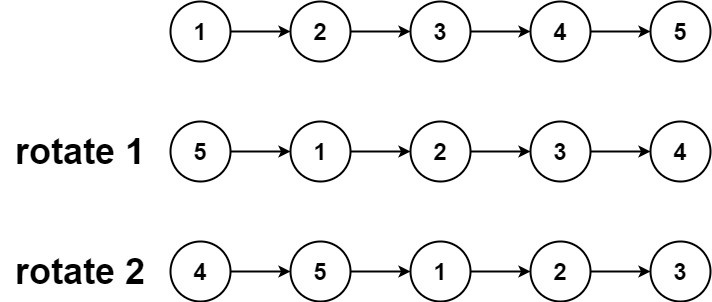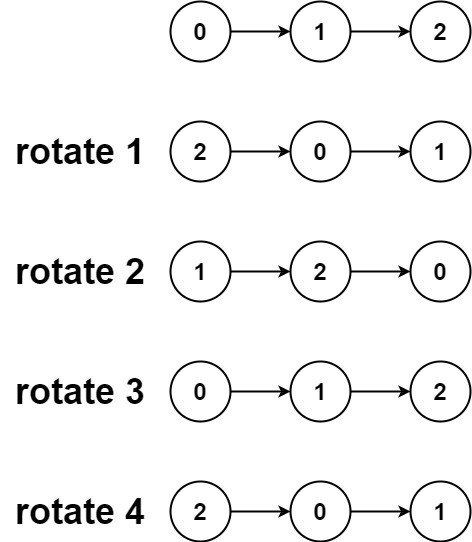Given the head of a linked list, rotate the list to the right by k places.
Example 1:

Input: head = [1,2,3,4,5], k = 2
Output: [4,5,1,2,3]
Example 2:

Input: head = [0,1,2], k = 4
Output: [2,0,1]
Constraints:
[0, 500].100 <= Node.val <= 100
0 <= k <= 2 * 10^9
這題看起來沒有很難,但實際上也解了快兩個小時,解法是要算一下往右移動k個位置,現在的開頭會在哪裡,新的開頭又是哪裡。
但算一下之後發現到k其實可以當作刪除後面幾個元素補到前面去,如果k大於鏈結陣列長度的話,就除以它取餘數作為新的k,這樣就可以解出來了。
Runtime: 0 ms (100%)
Memory Usage: 41.3 MB (44.99%)
/**
* Definition for singly-linked list.
* public class ListNode {
* int val;
* ListNode next;
* ListNode() {}
* ListNode(int val) { this.val = val; }
* ListNode(int val, ListNode next) { this.val = val; this.next = next; }
* }
*/
class Solution {
public ListNode rotateRight(ListNode head, int k) {
if (head == null || head.next == null || k == 0) return head;
ListNode fast = head;
int counter = 0;
while (fast != null && counter != k) {
fast = fast.next;
counter++;
}
if (fast == null && counter == k) return head;
if (fast == null && counter != k) {
fast = head;
counter = k % counter;
if (counter == 0) return head;
while (counter > 0) {
fast = fast.next;
counter--;
}
}
ListNode slow = head;
ListNode slowPrev = null;
ListNode fastPrev = null;
while (fast != null) {
fastPrev = fast;
fast = fast.next;
slowPrev = slow;
slow = slow.next;
}
if (fastPrev != null) fastPrev.next = head;
if (slowPrev != null) slowPrev.next = null;
return slow;
}
}
最近工作量真的挺多的,這題目用了四個pointer解題,導致記憶體用量暴增,實際上應該可以再減少兩個pointer,但等有空的時候再去想吧~~
![]()
